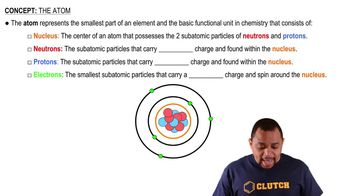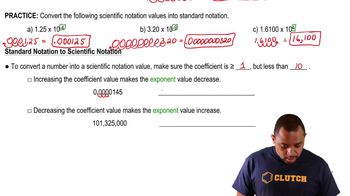Here are the essential concepts you must grasp in order to answer the question correctly.
Atomic Structure
Atoms consist of protons, neutrons, and electrons. Protons are positively charged particles found in the nucleus, while neutrons are neutral particles that also reside in the nucleus. The number of protons defines the element, while the total number of protons and neutrons gives the atomic mass.
Recommended video:
Isotopes
Isotopes are variants of a particular chemical element that have the same number of protons but different numbers of neutrons. For example, neptunium-237 has 93 protons (as it is neptunium) and 144 neutrons, distinguishing it from other isotopes of neptunium, which may have different neutron counts.
Recommended video:
Nuclear Notation
Nuclear notation is a shorthand representation of an isotope, typically written as 'Element-Mass Number'. For neptunium-237, the notation indicates that the element is neptunium (Np) with a mass number of 237, which is the sum of its protons and neutrons, allowing for easy identification of its nuclear composition.
Recommended video:
Standard Notation to Scientific Notation




